- Home
- How to
- How to
- Services
- Services
- Maintenance Plan
- Location
- Guides
- Guides
- No Hot Water – Self help
- Unvented Water Heater
- Unvented Water Heater Faults
- G3 Building Regulations
- Thermal Store Water Heaters
- Thermal Store Faults
- Gledhill ElectraMate
- Gledhill PulsaCoil
- Gledhill Torrent
- Gledhill Stainless Lite
- OSO Unvented Heater
- MegaFlo – Heatrae Sadia
- Santon Premier Plus
- Albion
- Manco Riverstream and Powerstream
- Manco Gladiator & Stirling
- Telford Tempest
- Safety Considerations Unvented Cylinders
- Reduce Your Water Heating Bill
- Range Tribune
- About Us
- About us
- Forums
- Contact

Unvented Water Cylinder Engineers
G3 Qualified
-
Call Now
0161 941 5571
IMMERSION HEATER REPLACEMENT
A lack of hot water may mean that there is a fault with the main immersion heater in your water cylinder. A reduction in the amount of hot water your cylinder provides could indicate a fault with the upper boost immersion heater, either way you will want to have the problem investigated quickly and a replacement immersion heater fitted in the shortest possible time. We are Manchester based and can often call out the same day to Manchester or Liverpool to investigate and rectify faults. Before you call, have a look at our Water Heater – Self Help page. The fault with the water heater may not require specialist repair, it might be the fault of a blown fuse or a tripped switch. If you do need our services we carry the most popular immersion heaters and are quick to respond, call us today.
EasyFlow are based in Manchester and provide an unvented water heater and a thermal store water heater repair and maintenance service in Manchester and Liverpool.
What Is an Immersion Heater?
Before we touch on replacing the elements on an unvented water heater, it’s important to first understand what an immersion heater actually is. Really, the concept is simple. An immersion heater is nothing more than a heating element designed to be heated under water. It’s immersed in the water, and then heats to warm the liquid to the desired temperature.
If you have an unvented water heater, chances are good that you have two immersion heaters. You have a primary heater that’s responsible for maintaining hot water at the right temperature during regular usage, and you also have a boost immersion heater, which is designed to kick in if there is a significant need for hot water (higher usage, for instance).
How long Do Immersion Heaters Last?
Immersion heaters are designed to last for a long time, often for many years. However, there is a chance that they will fail prematurely. In most instances, an unvented hot water heater will need at least one replacement immersion heater during its lifespan, but yours could require more than one replacement. It really comes down to the amount of usage the hot water heater sees, which ties directly into the volume of hot water your household uses on a daily basis.
The less demand there is for hot water, the less wear and tear there will be on immersion heaters, and the longer they will last, at least in theory. In reality, immersion heaters can fail at any point, and for many reasons. When they do, you’ll suffer from a lack of hot water and the only way to change the situation is to have the heater (or heaters) replaced by a professional service, such as EasyFlow.
Why Do Immersion Heaters Fail?
If immersion heaters are prone to failure, why do manufacturers use them in their designs? Is this a form of planned obsolescence? Actually, it is not. Immersion heaters are necessary to heat water in electric hot water heater systems where a gas-fired heater is not possible or practical. Many different things affect the longevity of immersion heaters in your cylinder, as well, including:
- The frequency of heating
- The demand for hot water in your household
- The brand
- The model
What Can You Do to Prolong the Lifespan of an Immersion Heater?
Making your existing immersion heater(s) last as long as possible is important, and there are several things that you can do to help ensure a longer lifespan. Perhaps the most important is to invest in annual maintenance. Draining and flushing the cylinder can help to prevent lime scale and other types of build up on the heater that might shorten its life. Another important consideration is to reduce your household use of hot water, which will decrease the overall number of heating cycles the heater experiences, leading to a longer use life.
Replacing the elements on an unvented water heater
All direct water heaters whether they are unvented, thermal store or combination tanks have immersion heaters. An immersion heater may last for between two and three years before it burns out and needs to be changed. This time frame does vary between makes and models of water heater. Most direct hot water cylinders have two immersion heaters; the main lower heater which is used every day to heat the stored water and a boost immersion heater situated halfway up the cylinder.
The boost element is used to top-up the heat inside the tank as and when necessary whenever demand for hot water has been greater than normal. The main immersion heater should be controlled by a timer to limit the amount of electricity used to heat the water and reduce wear on the element. If the immersion heater is controlled by a timer then it is worth checking to see if you have an off-peak electrical supply. If you do ensure that the water is being heated only during off-peak times.
Why Off-peak Hours?
Electricity usage in the home is one of the single largest home-related expenses for residents of the UK. Heating hot water during peak hours can dramatically increase your electricity-related costs. By ensuring that the timer on your system is set for off-peak hours, you’re able to generate the hot water you need for bathing and other household tasks, but save on electricity usage, as well.
Most modern hot water heaters, including vented and unvented water cylinders, have substantial insulation. This allows them to heat the water needed for the home once, during off-peak hours, and then maintain the temperature of that water for a very long time, up to 24 hours or even longer in most cases. When combined with off-peak heating, high levels of insulation allow you to reduce your electricity demands and related costs.
Joanne, Warrington
8 January 2024
Annual Service
Richard, Bolton
14 December 2023
Annual Service
Brian, Wilmslow
15 December 2023
Annual Service
Waheed, Hertfordshire
1 January 1970
No Hot Water
Excellent service as usual.Despite the terrible weather and the lift being out of order
JUDITH, Glossop
28 December 2023
Annual Service
Peter, Liverpool
30 November 2023
Annual Service
Jonathan, Liverpool
22 November 2023
Replacement Valves
Dominic, Chorlton
6 November 2023
Heating Control Replacement
An excellent service as usual and Chris was very helpful and informative.
Derek, Chester
2 October 2023
Annual Service
Step by step immersion heater replacement
The photos show an immersion heater being replaced in a step by step sequence. This would apply to most cylinders whether they are thermal stores, unvented water heaters or traditional gravity fed copper cylinders.
How to replace an immersion heater
-
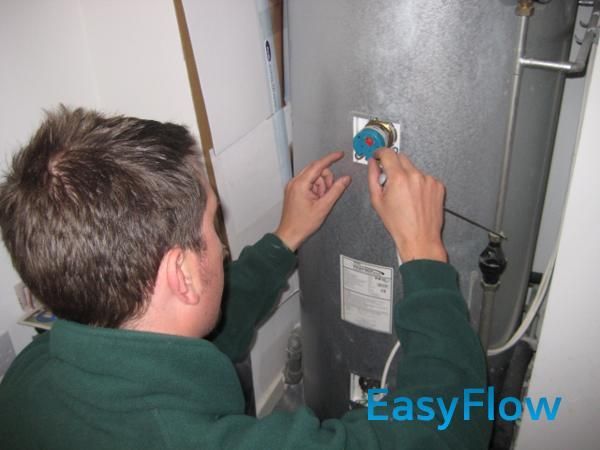 Step 1
Step 1Turn off the immersion heaters at the fuse spur or isolator
-
 Step 2
Step 2As an added precaution isolate the electricity supply at the consumer unit
-
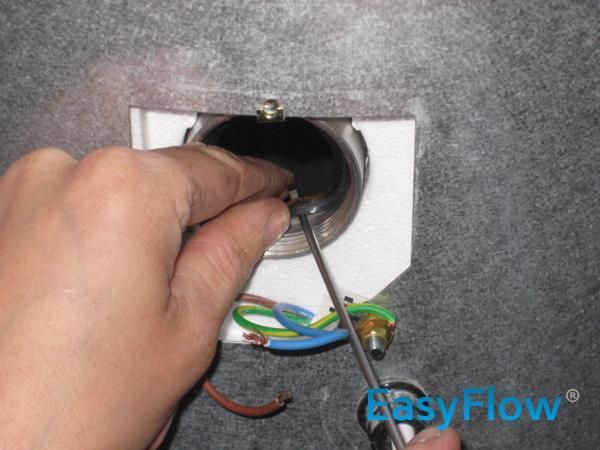 Step 3
Step 3Remove the electrical connections
-
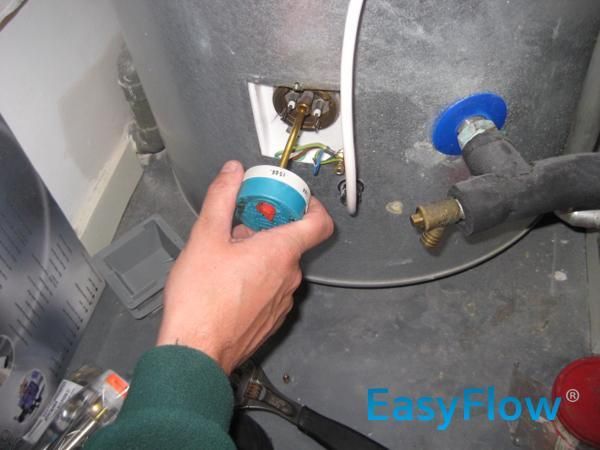 Step 4
Step 4Open a hot tap
-
 Step 5
Step 5Drain the water out of the cylinder
-
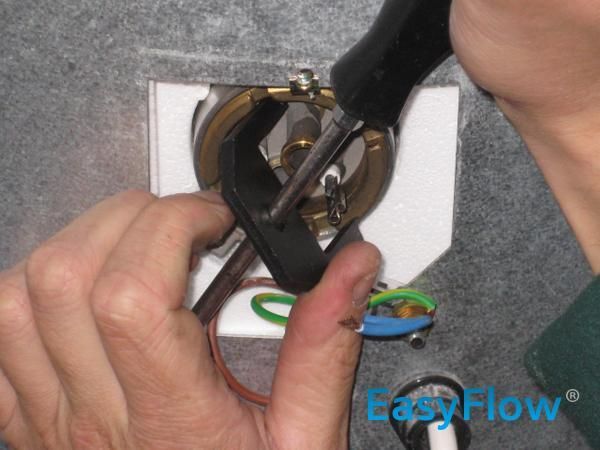 Step 6
Step 6Remove the locking nut or boss
-
 Step 7
Step 7Remove the immersion heater
-
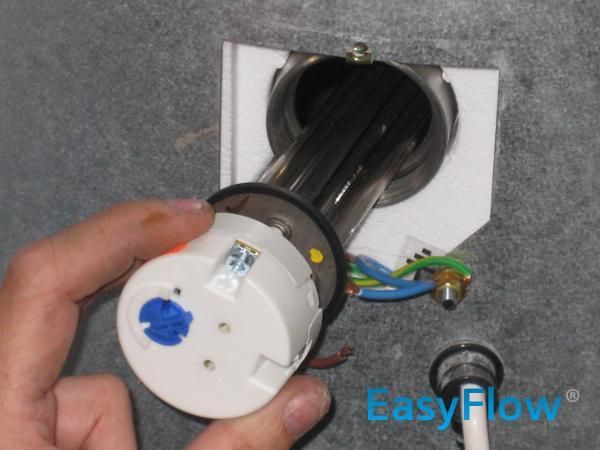 Step 8
Step 8Insert the new heater and tighten
-
 Step 9
Step 9Fill the cylinder and check the water flow
-
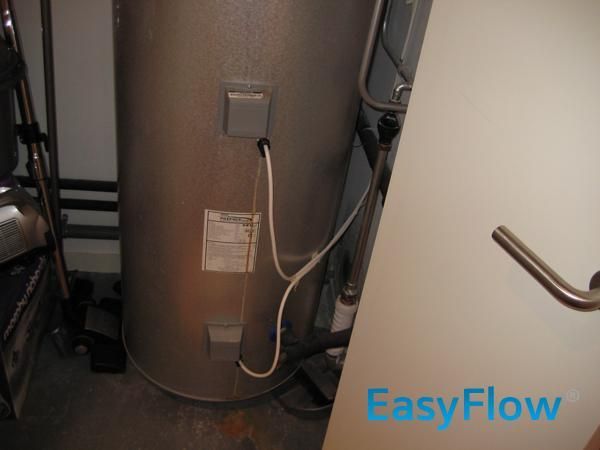 Step 10
Step 10Check for any leaks on immersion connections and pipes
-
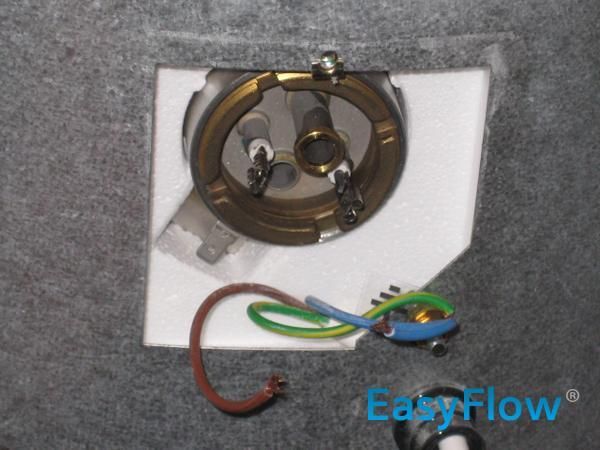 Step 11
Step 11Reconnect the electrical supply
-
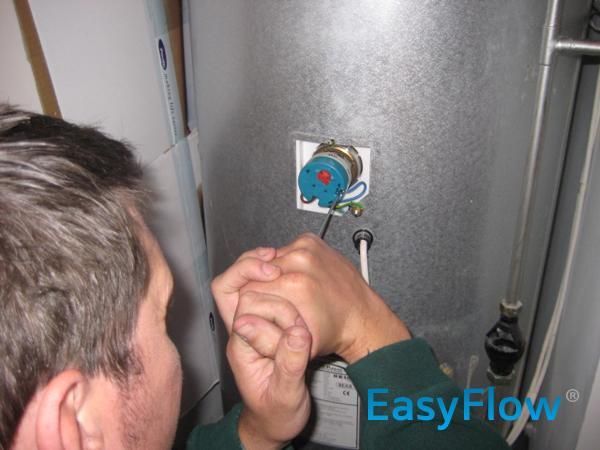 Step 12
Step 12Test the electrical connections
-
 Step 13
Step 13Check the earth loop
The information here is supplied for information purposes only. Do not try this yourself if you are unfamiliar with the isolation of water and electrical supplies. In the UK only part P registered electricians should work on domestic electrical circuits.
At EasyFlow, we employ both experienced plumbers and electricians to help ensure that our customers receive the high quality, prompt, professional service they deserve. If you have experienced a problem with your hot water heater, whether related to a failing or failed immersion heater or something else completely, we invite you to contact us today.
Please note: EasyFlow will guarantee the work we undertake for you but we will not guarantee manufacturers’ parts e.g. the immersion heater. Manufacturers often offer a 12 month warranty on parts; this will be passed on to you. Note that some manufacturers do not offer a warranty on a new part that has been fitted to an old water heater, e.g. Heatrae Sadia.
If you need an EasyFlow hot water specialist call now on 0161 941 5571
Contact us today to schedule your repairs or inspection. We’re also proud to offer service and annual maintenance for hot water heaters. This is recommended by manufacturers and insurance companines if your home has an unvented hot water system, but it is a wise idea for all hot water heater types, including thermal store cylinders and gravity-fed cylinders.

© 2025 Country & Town Limited. All rights reserved EasyFlow is a Country & Town Limited service







Find out what our clients are saying about the services we provide
Click to view